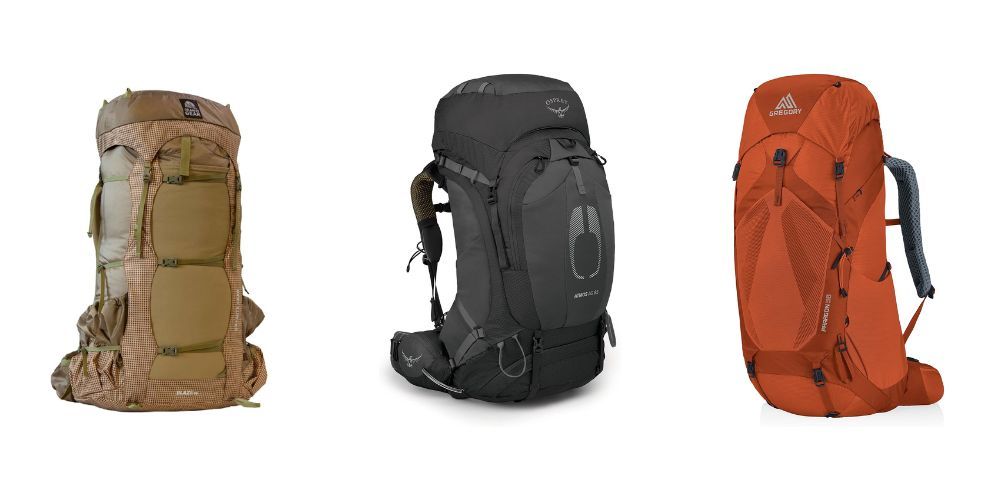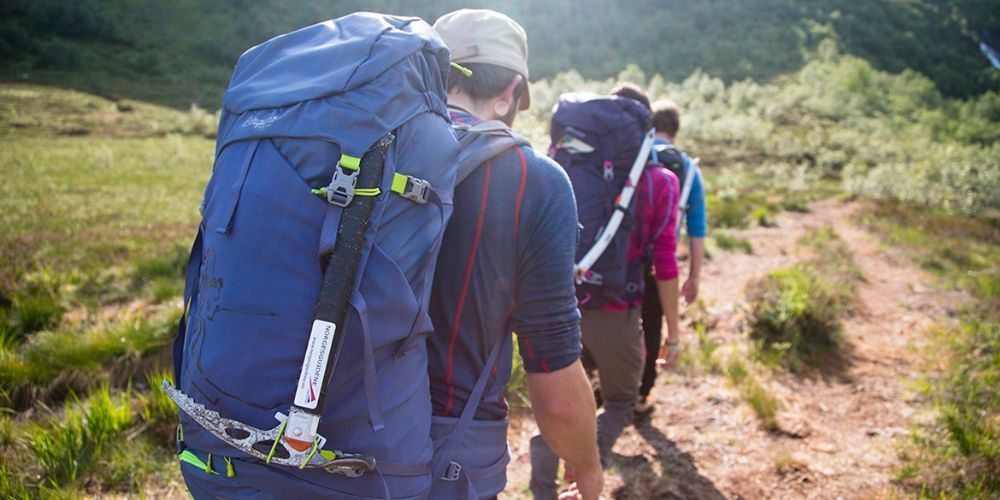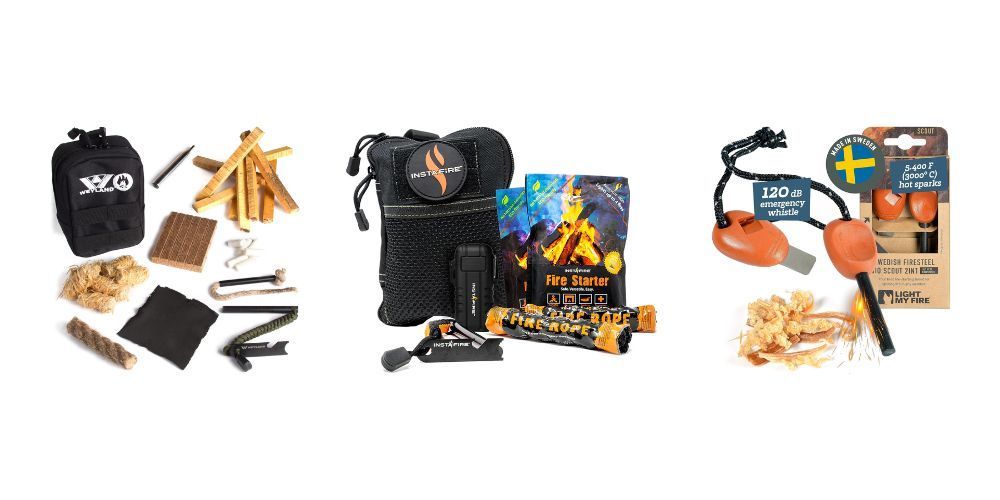The Ultimate Hiking Backpack Guide: Top Gear for Outdoor Adventures
Simply put, the best hiking backpack is the one that meets all your personal needs. Be it comfort, durability, or capacity, each feature plays a significant role in determining the value of your outdoor gear. For example, a robust pack enduring rough terrains signifies its top-notch quality material while sufficient storage space allows essential items to fit in perfectly. These factors enhance your hiking experience, making each step towards the summit more enjoyable. So, start exploring!
When choosing a hiking backpack, important factors to consider include the pack size (capacity) needed for your trip duration, the frame type (internal or external) for comfort and support, storage options to accommodate your gear, and pack fit based on your torso length. Additionally, it's essential to consider brands known for quality and durability, such as Osprey, Gregory, Deuter, and REI Co-op.

Our Top Picks for Hiking Backpacks
Choosing the perfect hiking backpack can be a challenging decision, especially with the array of options available. That’s why we have carefully handpicked our favorite ones, considering various outdoor needs. These selections have been curated to ensure that whether you're planning a day hike or an extended trek, you'll find an ideal companion to carry your gear. Let's explore what makes each stand out and how they cater to different types of hikers.
For instance, the Granite Gear Blaze 60 , weighing 3.0 lbs and boasting a volume of 60 liters, is not only super light but also packed with features perfect for extended multi-day hikes. The REI Co-op Flash 55 may be a better fit for those prioritizing lightweight design and modularity while setting out for shorter trips. On the other hand, the Osprey Atmos AG 65 offers superior comfort and ventilation, making it an excellent choice for hikers seeking long-term support without compromising on weight.
Moreover, all our top picks are sourced from leading outdoor gear manufacturers renowned for their commitment to quality and performance. We understand the importance of brand reputation and have factored this in when selecting these backpacks. Every bag has gone through rigorous evaluation based on intricate details that matter most to hikers.
Consider this: Gregory Paragon 58 , offering a balance of features and weight for lightweight enthusiasts, or the Osprey Aether 65 , known for its generous capacity and stability suitable for heavy-load carrying. Whether you value lightweight design, superior comfort, or maximum load capacity, our selection covers all these aspects.
By considering the diverse needs of hikers and meticulously evaluating attributes such as comfort, durability, capacity, and brand reputation, we aim to assist you in making an informed decision when it comes to selecting the perfect hiking backpack.
Having explored what sets apart these top-tier hiking backpacks, it's time to delve into the essential factors to consider: weight, capacity, and material – crucial elements in determining the right backpack for your outdoor adventures.
Essential Factors to Consider: Weight, Capacity and Material
When it comes to selecting a hiking backpack , three key factors significantly impact your experience on the trail: weight, capacity, and material. Let's break down each factor to ensure you make an informed decision when choosing your ideal backpack.
Weight
Carefully considering the weight of your backpack is crucial, especially for longer hikes. A lighter backpack reduces strain on your back and allows for more energy-efficient movement on the trail. Look for materials such as Dyneema or lightweight ripstop nylon, which provide durability without adding unnecessary bulk. Ultralight designs have gained popularity among hikers seeking to minimize the physical strain of carrying their gear over long distances. It's important to strike a balance between weight and durability, ensuring that your pack can withstand rugged use without compromising comfort.
Choosing a lightweight backpack doesn't mean sacrificing essential features or compromising on durability. Modern advancements in materials and construction techniques have led to the development of lightweight yet sturdy backpacks that can withstand the rigors of extensive hiking while keeping the load manageable. By prioritizing weight as a critical factor in your selection process, you can enhance your overall hiking experience and minimize fatigue during extended trips.
Capacity
The capacity of your hiking backpack plays a pivotal role in accommodating the gear and supplies necessary for your outdoor excursions. The length of your hikes dictates the appropriate capacity you'll require. For day hikes or shorter trips, a compact daypack with a capacity of up to 35 liters is sufficient to carry essentials such as water, snacks, and personal items.
On the other hand, weekend backpacking trips spanning 2-3 days may necessitate a larger pack with a capacity ranging from 30 to 50 liters, allowing ample space for additional gear like a tent and sleeping bag. When venturing on multiday expeditions extending beyond 3 days, opting for a hiking backpack with a capacity of 50 to 80 liters becomes imperative to accommodate an expanded array of equipment and supplies.
Material
The material composition of your hiking backpack is instrumental in ensuring its resilience to varying weather conditions and terrains encountered during hikes. Nylon and polyester are widely favored for their robustness and water-resistant properties, providing protection against moisture while enduring prolonged use in outdoor environments. Additionally, materials like Dyneema and Cordura offer exceptional durability, making them suitable choices for withstanding rugged terrain and inclement weather.
By comprehensively evaluating the weight, capacity, and material components of hiking backpacks, hikers can make well-informed decisions that align with their specific outdoor needs and preferences. It's essential to consider these factors collectively to optimize comfort, functionality, and durability during wilderness excursions.
As we continue our journey towards identifying the pinnacle of hiking backpack excellence, let's now explore the essential features that define superior performance in outdoor gear.
Key Features: Comfort, Ventilation, Durability and Design
When hiking through challenging terrain, comfort becomes essential. You don't want your backpack to weigh you down. Hence, factors like padded straps, adjustable hip belts, and back support systems are crucial for weight distribution and reducing strain during long hikes.
Don't underestimate the value of padded straps in preventing blisters and alleviating the burden on your shoulders. The adjustable hip belt is a game-changer, shifting the weight from your back to your hips, allowing for extended walking without fatigue. Back support systems seamlessly integrate the pack with your body, making it feel like an extension rather than a drawback.
Ventilation
Now, let's address ventilation. Hiking can be sweaty, particularly under the sun or while traversing rough terrain. Backpacks with mesh back panels and adjustable ventilation systems act as little windows enabling air to flow through as you move—ensuring minimal sweating and discomfort during warm weather hikes. This feature enables longer treks without feeling sticky or overheated.
Durability
Selecting a backpack made from tough materials is vital for enduring various terrains and weather conditions. Look for reinforced materials and robust stitching to guarantee resilience across rough landscapes and challenging weather conditions.
Design
Design, while less about durability or personal comfort, is equally crucial. A well-designed hiking backpack should feature smart compartments for organized gear storage on the go, attachment points for items like trekking poles or sleeping bags, and easy access pockets allowing you to grab essentials without stopping.
Whether embarking on short or long hikes, a well-designed pack ensures you have quick access to necessities when needed. These key features significantly impact the overall outdoor experience. So next time you're shopping for a new pack, remember: comfort, ventilation, durability, and smart design are just as important as the capacity and weight of a pack.
As we transition into our next segment—an authoritative evaluation of hiking backpacks —you'll gain valuable insights that direct you towards making an informed purchase decision.
Authoritative Hiking Backpack Reviews
Choosing the perfect hiking backpack is no easy task. With a plethora of options available in the market, making an informed decision can be overwhelming. Our comprehensive and unbiased hiking backpack reviews aim to empower hikers with the knowledge they need to select a backpack that best suits their hiking style and preferences.
Our reviews go beyond the surface, delving deep into what each backpack has to offer. We meticulously analyze factors such as weight, capacity, comfort, durability, ventilation, and design. Each of these elements plays a crucial role in determining the overall performance of a hiking backpack. Furthermore, we consider real-world scenarios and user experiences to provide practical insights that can guide hikers in their decision-making process.
Ventilation is one of the key aspects we carefully evaluate in our reviews. A well-ventilated backpack can make a significant difference during long hikes, especially in hot and humid conditions. Our analysis includes examining the breathability of back panels, shoulder straps, and hip belts, paying close attention to features such as mesh panels and airflow channels that enhance ventilation, ensuring that hikers can stay cool and comfortable on the trails.
For instance, a backpack with poor ventilation can lead to excessive sweating and discomfort, potentially causing chafing and skin irritation. Conversely, a backpack designed with strategic ventilation systems can mitigate these issues, allowing air to circulate and prevent moisture buildup. These details are precisely what we aim to convey through our reviews to help hikers make well-informed choices.
Additionally, our reviews provide an in-depth analysis of the load-bearing capabilities and ergonomic design of each backpack. We consider how well a pack distributes weight, its adjustability for different body types, and the ease of accessing gear while on the trail. This comprehensive approach ensures that our readers have a holistic understanding of what to expect from each hiking backpack under consideration.
By offering a robust selection of detailed reviews, we aim to equip hikers with invaluable information that enables them to select a hiking backpack that perfectly aligns with their needs and enhances their outdoor adventures.
Amidst the sea of options available for hiking enthusiasts, understanding the nuances of packing your hiking backpack is vital for a successful outdoor adventure. Let's now explore the best strategies for efficiently packing your hiking backpack to ensure a smooth and enjoyable journey on the trails.
Packing Your Hiking Backpack: Best Practices
Packing your hiking backpack efficiently is an art—an art that can make or break your outdoor adventure. The way you pack your gear directly affects your comfort, stability, and overall hiking experience.
Let's begin by organizing your gear. Picture your backpack as your portable home during a hike. You need to ensure everything is easily accessible yet well-organized. Most hike-ready backpacks come equipped with a variety of compartments and pockets. Use this layout to your advantage when packing. Keep essentials like clothing, food, first-aid kit , and navigation tools in separate compartments for easy access. This way, you don't have to empty out everything just to find a snack or your map.
It's all about making life easier for yourself on the trail. Think of it like organizing your kitchen cabinets—the more organized it is, the easier it is to find what you need.
Next up is balancing weight distribution within your pack. Imagine a see-saw: if one side has all the weight while the other doesn't, it's going to be tough to keep it stable. The same applies to your backpack. Always place heavier items closer to your back and towards the middle of the backpack. This approach ensures better equilibrium and stability while preventing strain on your back during prolonged hikes.
Think of it as a game of Tetris - fitting everything together securely is key! By evenly distributing weight throughout the pack, you'll find it much easier to maintain balance, walk comfortably, and reduce fatigue.
Utilizing Compression Straps and Lash-on Loops
Lastly, we need to think about securing loose items. Hiking trails can get pretty bumpy, and items can shift around inside your pack if they're not properly secured. This can throw off the balance and make your hike uncomfortable or even dangerous.
To prevent this, use compression straps and lash-on loops provided on the backpack. These features are designed to keep things snug and secure against the pack's frame, minimizing movement during hiking. Larger or awkwardly-shaped items like sleeping bags or tents can be lashed onto the outside of the pack using these loops, freeing up space inside for other essentials.
For instance, attaching a sleeping bag securely using lash-on loops prevents it from bouncing around inside as you hike.
By mastering these techniques, you’re setting yourself up for an enjoyable and safe backpacking experience without unnecessary discomfort or frustrations along the way.
With a well-packed and balanced backpack at your disposal, let's now delve into the elements that will help you make an informed choice when selecting the perfect hiking backpack.

A Guide to Making Your Hiking Backpack Choice
When choosing a hiking backpack, the pack size (capacity) is crucial. Daypacks (up to 35 liters) are suitable for day hikes. Weekend backpacking trips (30 to 50 liters) require more gear like a tent and sleeping bag. Multiday trips (50 to 80 liters) demand even more gear, while extended trips of 5+ nights (70+ liters) necessitate a larger pack.
It's important to select a backpack with the right features and design for your specific needs. Consider the frame type (internal or external), suspension system, ultralight design, storage options, tool and lash-on loops, and reservoir compatibility. The frame provides structure and support, influencing weight distribution. Internal frame packs are popular for their practicality and ease of carry, making them the preferred choice over external frame packs.
The suspension system plays a significant role in comfort and stability. Look for adjustable shoulder straps and hip belts for a customized fit that evenly distributes the weight. Storage options such as compartments, pockets, and attachment points for gear are essential for organizing and accessing your belongings during hikes.
Tailoring Your Choice to Fit
Choose a backpack that fits your body comfortably, paying attention to torso length and hip belt size. Women's specific packs have subtle differences in fit, catering to anatomical differences. These packs often feature shorter torso lengths, contoured shoulder straps, and wider hip belts for a comfortable and secure fit for female hikers.
Materials play a vital role in determining durability and weather resistance. Waterproof and abrasion-resistant materials provide added protection against the elements, ensuring that your gear stays dry and secure during challenging outdoor conditions.
Investing in quality hiking backpacks from top brands can offer durability and reliability. Leading brands such as Osprey, Gregory, Deuter, and REI Co-op provide a range of backpacks designed to meet diverse hiking needs while offering features such as adjustable harnesses, ventilated back panels, and strategic padding for enhanced comfort during long treks.
By considering these essential factors when choosing a hiking backpack, you can make an informed decision that aligns with your adventure goals and ensures that you embark on your outdoor excursions well-prepared with the right gear.
Now armed with an understanding of these key factors, you'll be better equipped to select a hiking backpack that complements your outdoor experiences.
Nature's Playbook
As an Amazon Associate I earn from qualifying purchases.









